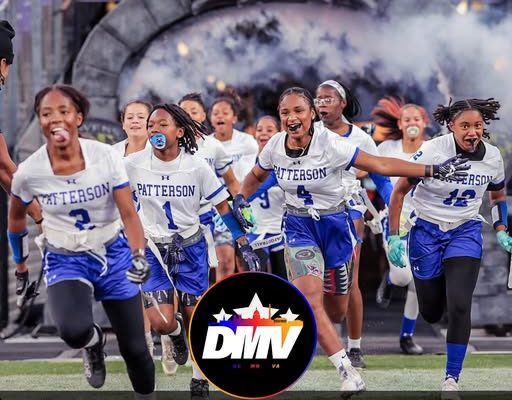The growing momentum behind girls flag football in the state of Maryland is receiving a massive boost in 2025 thanks to a transformative partnership between the Baltimore Ravens and Under Armour. The two powerhouses are expanding their Girls Flag Football initiative to include a record-breaking 92 public high schools across the state, marking a substantial leap in participation and investment. Entering its third year, the initiative builds upon its already impressive foundation by extending its reach to new schools in Calvert County, Charles County, and two additional high schools in Baltimore City. This expansion not only solidifies the program’s impact in urban and suburban communities but also symbolizes the inclusive, forward-looking vision of both the Ravens and Under Armour.
At its core, the initiative is more than just a sports program. It’s a bold statement about gender equity in athletics and the power of football to empower young women. Each of the 92 participating schools will receive \$10,000 in direct funding from the Ravens to help cover operational expenses—ranging from equipment, travel, and coaching stipends to other logistical needs that help a team function at a high level. Under Armour, with its headquarters in Baltimore and a longstanding commitment to youth athletics, is outfitting every team with custom-designed uniforms, ensuring that players not only have what they need to perform, but also take the field with a sense of pride and belonging.
This initiative is timed perfectly with the surging national interest in flag football, which has seen significant growth across age groups and genders in recent years. Flag football, often praised for its accessibility and safety compared to tackle football, has become a preferred entry point for new athletes. With the sport now officially added to the 2028 Olympic Games in Los Angeles, the pipeline for elite female flag football players is beginning to take shape—and Maryland is rapidly becoming a national leader in developing that talent.
What sets this initiative apart isn’t just the scale, but the vision. The long-term objective is to see girls flag football officially sanctioned as a varsity sport by the Maryland Public Secondary Schools Athletic Association (MPSSAA). Such recognition would represent a major milestone, offering girls the same legitimacy, access to scholarships, and developmental opportunities that boys enjoy in traditional tackle football. Achieving varsity status is no small task, requiring both grassroots support and institutional change, but with the Ravens and Under Armour backing the effort, the path forward looks increasingly attainable.
The 2025 season will culminate in a high-profile state championship game hosted at M\&T Bank Stadium, home of the Ravens. This final event is more than just a game—it’s a celebration of achievement, resilience, and the bright future of girls flag football in Maryland. For many of the participating athletes, the chance to compete on an NFL field in front of family, friends, and community leaders will be a once-in-a-lifetime opportunity that reinforces the idea that their participation is not only valid but valued.
The commitment shown by the Ravens reflects a broader NFL trend that is reshaping what football looks like at the grassroots level. Several NFL franchises have launched or supported similar initiatives in their respective regions, but the Ravens stand out for the comprehensive nature of their support. Their involvement isn’t just ceremonial; it’s structural. From financial backing to public advocacy and facility access, the franchise is laying down the infrastructure necessary for long-term sustainability.
Under Armour’s role cannot be understated either. As one of the most recognizable athletic apparel brands in the world, the company brings not only technical resources but also marketing muscle. By outfitting the athletes in cutting-edge gear and leveraging its branding platforms, Under Armour helps elevate the profile of the sport. The symbolic weight of seeing young women wearing professionally-designed uniforms with the same quality and detail found in elite-level programs sends a strong message: these athletes matter.
There’s also a significant educational component to this initiative. High school sports have always played a dual role—providing physical activity and fostering life skills. Girls flag football is proving to be a rich ground for both. Participants are learning teamwork, leadership, discipline, and resilience—qualities that translate well beyond the football field. Furthermore, as schools begin to hire and train more coaches for the girls game, the initiative is opening up new pathways for female mentorship and leadership within the athletic community.
The broader community impact is already being felt. Parents, educators, and local leaders are embracing the program for its inclusivity and potential. For too long, football has remained a male-dominated space, especially at the high school level. With this expansion, more girls are not just participating in the game—they’re changing it. They’re carving out a space for themselves in a sport that traditionally left them on the sidelines, and in doing so, they are redefining the cultural landscape of high school athletics in Maryland.
The expansion to Calvert County and Charles County is particularly significant. These areas, while less urban than Baltimore, represent vital regions where access to athletic programs can have a profound impact on community engagement and student outcomes. The inclusion of additional schools in Baltimore City also ensures that urban youth continue to have structured, well-funded opportunities to participate in athletics—a key factor in addressing broader educational and social disparities.
While the program is currently focused on high school athletes, its ripple effects are already being felt at the middle school and recreational levels. Younger girls are now seeing a pathway forward in football, which has traditionally been limited or nonexistent. In time, this could foster a full developmental pipeline that stretches from youth flag leagues to high school varsity teams and beyond. With the Olympic spotlight looming in 2028, the timing could not be better.
There is also a growing recognition among college programs that flag football may soon become a major recruiting front. Schools across the country are beginning to form women’s flag football teams, particularly at the NAIA level, where scholarships are already being offered. As more states push for varsity recognition at the high school level, it’s only a matter of time before larger NCAA institutions begin exploring their own opportunities. Maryland’s investment now could place its athletes at the forefront of a coming boom in collegiate flag football.
Moreover, the visibility and media attention surrounding the initiative are helping to shift public perceptions. What was once considered a niche or novelty sport is now being taken seriously as a competitive, dynamic, and exciting game. Games are being live-streamed, highlights are making their way into local sports coverage, and communities are showing up to cheer on these athletes just as they would for traditional boys football. This shift in perception is crucial to the initiative’s long-term viability.
The Ravens and Under Armour are showing how a public-private partnership can drive meaningful change in youth sports. By combining the Ravens’ local influence and logistical capacity with Under Armour’s branding and gear, the program is achieving what no single organization could do alone. It’s a model that other states and sports may look to replicate as the push for gender equity in athletics continues nationwide.
Even state and local governments are taking notice. Conversations have begun among school boards and athletic directors about how to integrate flag football into existing athletic structures without displacing other sports. This includes discussions around scheduling, field usage, and ensuring that there is equitable access to facilities. These are the types of logistical challenges that indicate just how real the momentum has become—and how seriously the movement is being taken.
Perhaps most importantly, the young women participating in this program are beginning to realize their own potential. For many, this will be their first time wearing a team jersey, competing under the lights, and experiencing the camaraderie and pride that comes with representing their school. These experiences shape identity and self-esteem in powerful ways. They build confidence that can carry into college, careers, and community leadership.
As the 2025 season approaches, anticipation is growing. Coaches are being hired, rosters are being formed, and schools are finalizing preparations for what promises to be the most expansive girls flag football season Maryland has ever seen. The championship at M\&T Bank Stadium will be the capstone of this ambitious effort—but it’s not the end goal. It’s just one milestone on a much larger journey to institutionalizing girls flag football and giving female athletes the platform they have long deserved.
The Baltimore Ravens and Under Armour have made a bold commitment not just to a sport, but to a vision. A vision where every girl in Maryland who wants to play football has the opportunity, resources, and support to do so. A vision where flag football is not viewed as a lesser alternative, but as a vibrant and legitimate sport in its own right. A vision that recognizes the power of athletics to shape lives and bring communities together. In the years to come, when girls flag football is played on Olympic fields and broadcast to millions, those athletes will trace their roots to initiatives like this one—where belief met action, and dreams found their footing on the fields of Maryland.



